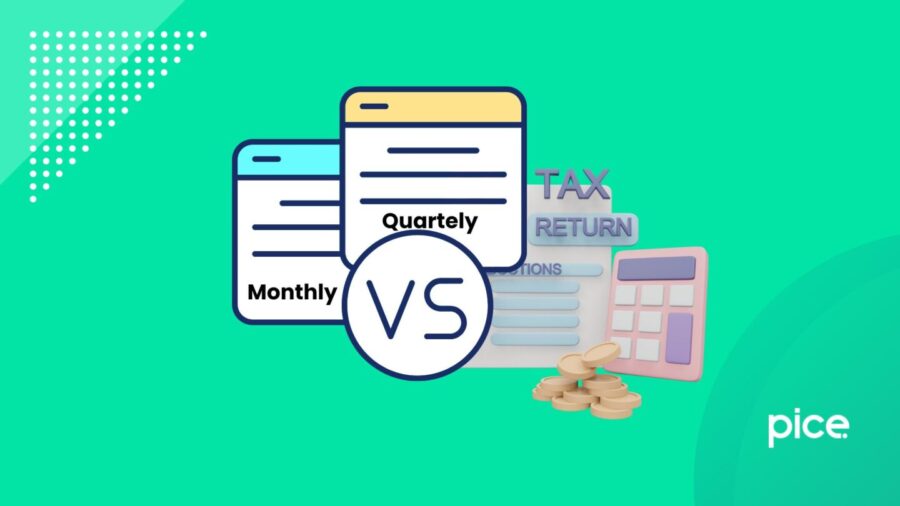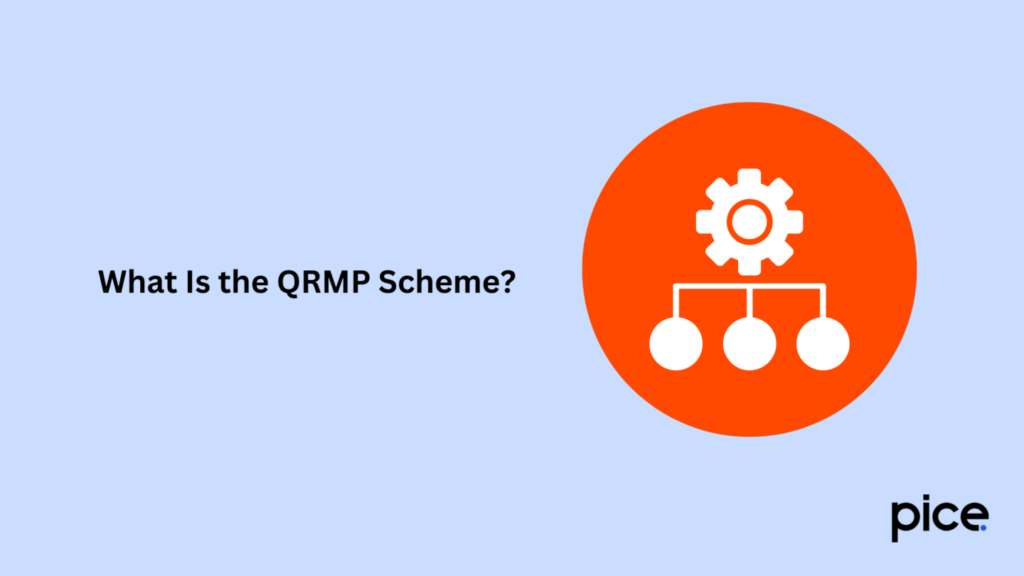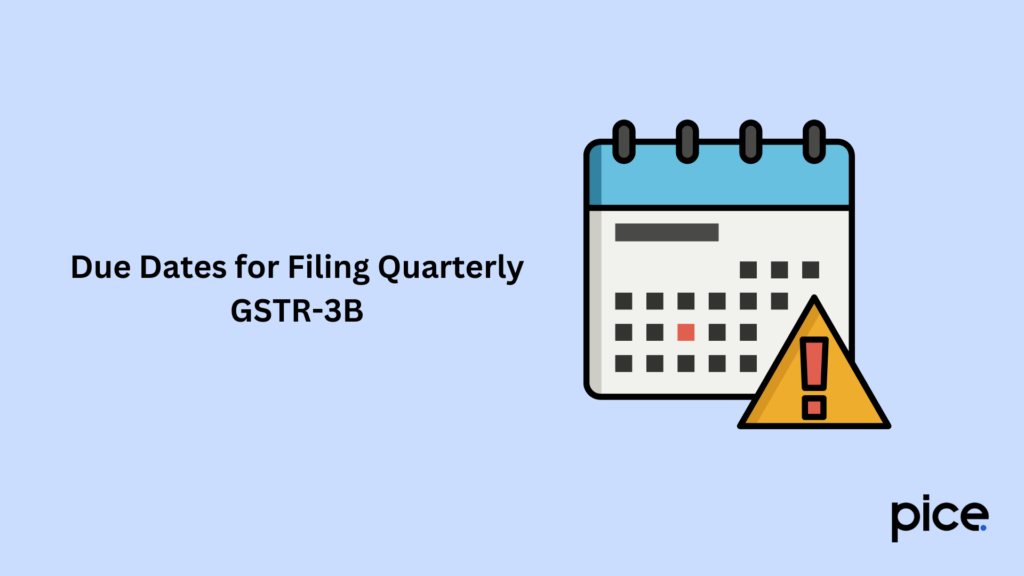Monthly vs. Quarterly GST Returns: A Comparison Analysis: What Should Small Taxpayers Opt For?
- 20 Sep 24
- 13 mins

Monthly vs. Quarterly GST Returns: A Comparison Analysis: What Should Small Taxpayers Opt For?
- What Are The Types of Returns to Be Filed and the Frequency of Filing Them?
- A Comparison Analysis for Small Taxpayers: Quarterly vs. Monthly Returns
- Should Small Taxpayers Opt for Quarterly or Monthly Filing of Returns?
- What Is the QRMP Scheme?
- Why Is the QRMP Scheme Important?
- Who Is Eligible for the QRMP Scheme?
- How to Exercise the Option for the QRMP Scheme?
- Deemed Monthly/Quarterly Filing of GSTR-3B
- How to Submit Details of Outward Supplies?
- How to Make Monthly Tax Payments Under the QRMP Scheme?
- Due Dates for Filing Quarterly GSTR-3B
- Input Tax Credit Claims Under QRMP Scheme
- Interest in the QRMP Scheme
- A Late Fee Under the QRMP Scheme
- Issues or Challenges Under QRMP
- Conclusion
Key Takeaways
- Small taxpayers with turnover below ₹5 crore can choose between quarterly and monthly GST return filing based on their business needs.
- The QRMP scheme allows eligible small taxpayers to file returns quarterly while paying taxes monthly, easing compliance.
- Quarterly return filers can use the Invoice Furnishing Facility (IFF) to upload invoices monthly, improving cash flow management.
- Interest and late fees apply under QRMP, with reduced penalties for timely tax payments and nil tax liabilities.
- Choosing between quarterly and monthly filing requires careful consideration of business size, transaction volume, and compliance capacity.
Small taxpayers can opt for either monthly or quarterly return filing, unlike large taxpayers. However, there are certain eligibility criteria and benefits for both monthly and quarterly GST return filing.
The blog discusses the difference between monthly and quarterly GST return filing to help small taxpayers make an informed decision by choosing the right option.
What Are The Types of Returns to Be Filed and the Frequency of Filing Them?

Small taxpayers with an aggregate annual turnover of less than ₹5 crore have the option to file GST either monthly or quarterly. However, large taxpayers who exceed the aggregate annual turnover threshold of ₹5 crore mandatorily need to file GST on a monthly basis.
The types of returns and the frequency of filing them are illustrated in the following table:
| Frequency | Name of the return |
| Quarterly | Sahaj |
| Sugam | |
| Normal (Quarterly) | |
| Monthly | Normal (monthly) |
A Comparison Analysis for Small Taxpayers: Quarterly vs. Monthly Returns
Small taxpayers can deduce whether to pay taxes monthly or quarterly, once a year. Here is a comparison analysis for small taxpayers for quarterly and monthly returns:
| Parameters | Quarterly Returns | Monthly Returns |
| Filing Frequency | 4 times a year in 4 quarters | 12 times a year in 12 months |
| Forms required | Sahaj, Sugam or normal forms based on the type of information that needs to be declared | Normal (monthly) |
| Days when no document upload is allowed | 23rd and 25th of the next month next of the quarter | 18th and 20th of the following month |
| Time available to take credit | Within the 10th of the next month, suppliers can avail credits by filing missing invoices for the first and second month of the quarter. | Suppliers can upload documents until the 10th of the next month for claims. |
| Editing of documents uploaded | An uploaded document is either accepted or rejected by the recipient within the 10th of the month after a quarter ends. For an accepted document, you, as a supplier, need to reset or unlock it for edits. Relatively, if you are a quarterly return filer, you will get more time for edits. | You can edit an accepted document by resetting and unlocking it within the 10th of the month after a quarter ends. |
| Editing of documents after the 10th of the next month | If a document is rejected after the 10th of the next month, suppliers can edit it after filing quarterly returns. | If a document is rejected after the 10th of the next month, suppliers can edit it after filing monthly returns. |
| Unavailability of credit | If you fail to file returns as a supplier or quarterly filer in a quarter, the credits for that quarter will be unavailable. | If you fail to file returns as a supplier in a month, the credits for that month will be unavailable. |
Should Small Taxpayers Opt for Quarterly or Monthly Filing of Returns?
Here is the answer to which small taxpayers should choose monthly and quarterly returns by highlighting the difference between monthly and quarterly GST returns.
A registered person or a taxpayer with a small number of supplies, regular compliance, and simplified outward supplies can opt for Sahaj or Sugam to reap the benefits of quarterly returns. Dispute and conflict settlement between a supplier and a recipient can be suitable in a monthly return.
What Is the QRMP Scheme?

QRMP stands for Quarterly Return Monthly Payment Scheme. Its introduction on 1st January, 2021 allowed small registered taxpayers with aggregate turnover of less than ₹5 crore to file returns quarterly while paying taxes on a monthly basis.
Earlier taxpayers had to file GSRT-1 and GSTR- 3B on a monthly basis. However, the QRMP scheme replaced it and allowed return filing on a quarterly basis. For instance, for the quarter of April to June, you can pay taxes for April by the due date in May.
Why Is the QRMP Scheme Important?
The QRMP scheme is important for small registered taxpayers in multiple ways. Let us take a look at some of these reasons:
- The QRMP scheme helps small businesses reduce the frequency of return filing every year.
- Under the QRMP scheme, taxpayers can claim input tax credits with the IFF or Invoice Furnishing Facility. The IFF facility allows taxpayers to file GSTR - 1 by allowing upload of invoices after every month rather than the taxpayer having to wait for the quarter end to file returns.
Who Is Eligible for the QRMP Scheme?
A registered taxpayer who needs to file returns in Form GSTR-3B having an aggregate annual turnover not exceeding ₹5 crore is eligible for the QRMP scheme. Moreover, if a taxpayer exceeds the aggregate turnover of ₹5 crore in a financial year, he/she shall not be eligible from the next quarter.
How to Exercise the Option for the QRMP Scheme?
If a registered taxpayer is willing to file GSTR-3B quarterly, he should declare the same on the GST portal beforehand. On completing registration for quarterly GST filing, the registered taxpayer has to continue the same excluding some exceptions as follows:
- If the aggregate turnover of the taxpayer exceeds ₹5 crore in a financial year, the taxpayer will have to file GSTR- 3B on a monthly basis.
- The registered taxpayer cannot file quarterly returns if he or she has not filed the returns for the previous quarter.
Deemed Monthly/Quarterly Filing of GSTR-3B
Registered taxpayers who have presented their GSTR-3B return for October by 30th November are deemed for monthly or quarterly filing options of GSTR-3B as follows:
| Class of Registered Persons | Deemed option |
| A registered normal taxpayer having an aggregate annual turnover not exceeding ₹1.5 crore and have presented form GSTR-1 quarterly in the current financial year or aggregate turnover of exceeding ₹1.5 crore and up to ₹5 crore in the previous financial year. | Quarterly GSTR-3B |
| Registered eligible taxpayers having an aggregate annual turnover not exceeding ₹1.5 crore and have presented GSTR - 1 monthly in the current financial year. | Monthly GSTR-3B |
How to Submit Details of Outward Supplies?
Taxpayers under the QRMP scheme can choose the IFF or Invoice Furnishing Facility to upload invoices every month for GSTR -1 filers quarterly. However, it can be a feasible process if you remember the following things while using IFF:
- You can use IFF for the first two months of the quarter.
- Your GSTR-1 return will include invoices for the last month of the quarter only.
- If you have uploaded invoices in IFF, you do not need to upload the invoices in form GSTR-1.
- As a taxpayer, you need to submit B2B sales transaction details for inter-state and intra-state transactions followed by debit and credit notes of the B2B invoice details during a month.
- The total net value of the invoices should not exceed ₹50 lakhs per month.
- Your submitted details on IFF will reflect on GSTR - 2A, GSTR - 2 B, GSTR - 4 A, or GSTR - 6A.
- The IFF facility has been in effect from 1st January 2021.
How to Make Monthly Tax Payments Under the QRMP Scheme?
Taxpayers need to deposit tax using form PMT - 06 within the 25th of the next month for the first two months of a quarter. There can be two payment methods when it comes to monthly tax liability, namely the Fixed Sum Method or FSM or 35% challan method (uses pre-filled challan) and the self-assessment method as follows:
- Fixed Sum Method:
This method is also known as the 35% challan method. Here are the types of taxpayers and the tax to be paid:
| Types of taxpayers | Tax payable |
| A taxpayer who files GSTR-3B quarterly in the previous quarter | 35% of the tax to be paid in cash in the previous quarter |
| A taxpayer who files GSTR-3B monthly during the previous quarter | 100% tax should have been paid in cash for the last month of the previous quarter |
- Self-assessment Method:
In the self-assessment method, taxpayers can manually arrive at the tax liability after considering the inward and outward supplies followed by the input tax credit. The taxpayer has to pay it using Form PMT - 06 and can verify the ITC available for the month from Form GSTR - 2B.
However, in two instances the taxpayer need not deposit any amount. The instances are as follows:
- If the tax liability is nil or adequate for the first month of the quarter in the electronic cash or credit ledger.
- When the cumulative tax liability for the first two months of the quarter is nil or adequate in the cash or credit ledger.
Notably, a registered taxpayer will not be eligible for the above method if he/she does not furnish the return of the entire tax period in the previous month within the last day of the month.
Due Dates for Filing Quarterly GSTR-3B

The due dates for filing GSTR-3B vary based on the Indian state or union territory. The due dates are 22nd and 24th of the month based on the Indian state from where you are filing. You need to finish filing within the due dates.
Input Tax Credit Claims Under QRMP Scheme
The process to claim an Input Tax Credit (ITC) does not differ under the QRMP scheme. Taxpayers under the QRMP scheme who use the self-assessment method of tax payment calculation for the first two months of the quarter can avail ITC as per GSTR - 2B for that month. They can pay the balance towards GST liability as cash.
After filing GSTR - 1, the GSTR - 2B gets generated on the 14th of the month succeeding the quarter. As a result, if you deal with vendors under the QRMP scheme you need to consider GSTR - 2B for ITC claims.
Interest in the QRMP Scheme
Based on the method of payment of tax, here are the applicable interest under the QRMP scheme:
Fixed Sum Method (FSM) or the 35% Challan Method:
| Scenario | Interest payable |
| If you pay the mentioned tax liability in pre-filled form GST PMT- 06 by the 25th of the next month | Nil |
| If you do not pay the mentioned tax liability in the pre-filled form GST PMT- 06 by the 25th of the next month. | 18% of the tax liability applies from the 26th of the next month until the payment date |
| The ultimate tax liability for the first two months does not exceed the amount paid through the pre-filled form GST PMT - 06 | Nil |
| The ultimate tax liability for the first two months exceeds the amount paid through the pre-filled Form GST PMT - 06 and is paid within the quarterly GSTR-3B due date | Nil |
| The ultimate tax liability for the first two months exceeds the amount paid through the pre-filled form GST PMT - 06 and is not paid within the quarterly GSTR-3B due date | 18% tax liability from the GSTR-3B due date to the payment date |
Self-assessment Method
The interest rate is 18% which the taxpayer has to pay on the net tax liability if it remains paid or unpaid beyond the due date for a quarter's first two months. Regardless of the method of tax payment, 18% interest is payable by taxpayers in the case of late payments.
A Late Fee Under the QRMP Scheme
The late fee for not filing GSTR-3B within the due date varies significantly in the case of CGST, SGST and IGST. It further varies based on the tax liability. Here are the late fees for you:
| Name of the Act | Daily late fee | Daily late fee in case of nil tax liability |
| CGST Act | ₹25 | ₹10 |
| SGST Act | ₹25 | ₹10 |
| IGST Act | ₹50 | ₹20 |
Notably, no late fee applies for payment delay in the first two months of the quarter in form PMT- 06.
Issues or Challenges Under QRMP
Here are the challenges that taxpayers face under the ORMP scheme:
- Time-consuming
- Segregating B2B and B2C further creates challenges for taxpayers while using the IFF method.
- Reconciliation of form GSTR-1, IFF and sales register is challenging.
- Choosing the tax payment method is challenging.
Conclusion
Now that you know the difference between monthly and quarterly GST return filing, you can easily choose the feasible option for you as a small taxpayer. However, if you are a tax professional or a venture owner whose aggregate turnover exceeds ₹5 crore, you need to choose the monthly GST return filing option.
💡If you want to pay your GST with Credit Card, then download Pice Business Payment App. Pice is the one stop app for paying all your business expenses.
 By
By 

















